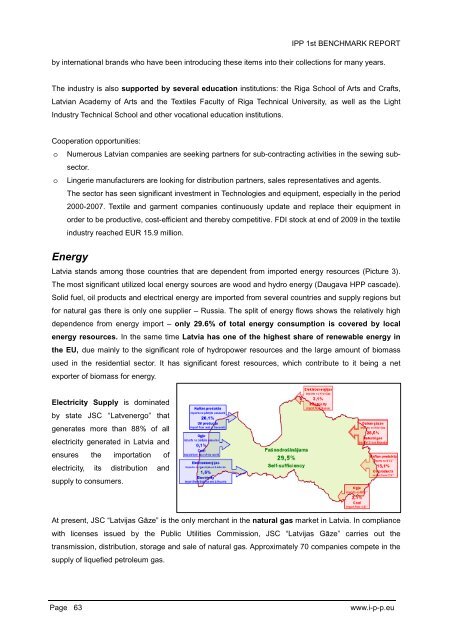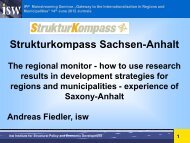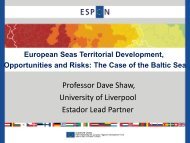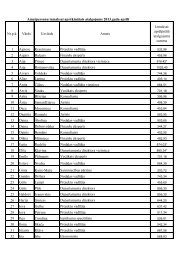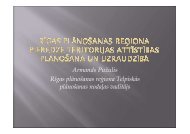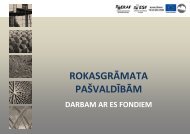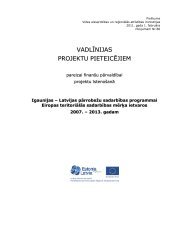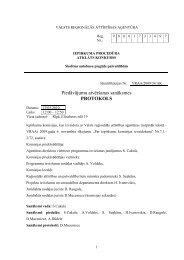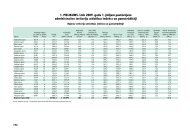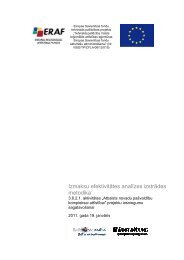Benchmark Study 1
Benchmark Study 1
Benchmark Study 1
You also want an ePaper? Increase the reach of your titles
YUMPU automatically turns print PDFs into web optimized ePapers that Google loves.
IPP 1st BENCHMARK REPORT<br />
by international brands who have been introducing these items into their collections for many years.<br />
The industry is also supported by several education institutions: the Riga School of Arts and Crafts,<br />
Latvian Academy of Arts and the Textiles Faculty of Riga Technical University, as well as the Light<br />
Industry Technical School and other vocational education institutions.<br />
Cooperation opportunities:<br />
o Numerous Latvian companies are seeking partners for sub-contracting activities in the sewing subsector.<br />
o Lingerie manufacturers are looking for distribution partners, sales representatives and agents.<br />
The sector has seen significant investment in Technologies and equipment, especially in the period<br />
2000-2007. Textile and garment companies continuously update and replace their equipment in<br />
order to be productive, cost-efficient and thereby competitive. FDI stock at end of 2009 in the textile<br />
industry reached EUR 15.9 million.<br />
Energy<br />
Latvia stands among those countries that are dependent from imported energy resources (Picture 3).<br />
The most significant utilized local energy sources are wood and hydro energy (Daugava HPP cascade).<br />
Solid fuel, oil products and electrical energy are imported from several countries and supply regions but<br />
for natural gas there is only one supplier – Russia. The split of energy flows shows the relatively high<br />
dependence from energy import – only 29.6% of total energy consumption is covered by local<br />
energy resources. In the same time Latvia has one of the highest share of renewable energy in<br />
the EU, due mainly to the significant role of hydropower resources and the large amount of biomass<br />
used in the residential sector. It has significant forest resources, which contribute to it being a net<br />
exporter of biomass for energy.<br />
Electricity Supply is dominated<br />
by state JSC “Latvenergo” that<br />
generates more than 88% of all<br />
electricity generated in Latvia and<br />
ensures the importation of<br />
electricity, its distribution and<br />
supply to consumers.<br />
At present, JSC “Latvijas Gāze” is the only merchant in the natural gas market in Latvia. In compliance<br />
with licenses issued by the Public Utilities Commission, JSC “Latvijas Gāze” carries out the<br />
transmission, distribution, storage and sale of natural gas. Approximately 70 companies compete in the<br />
supply of liquefied petroleum gas.<br />
Page 63<br />
www.i-p-p.eu


